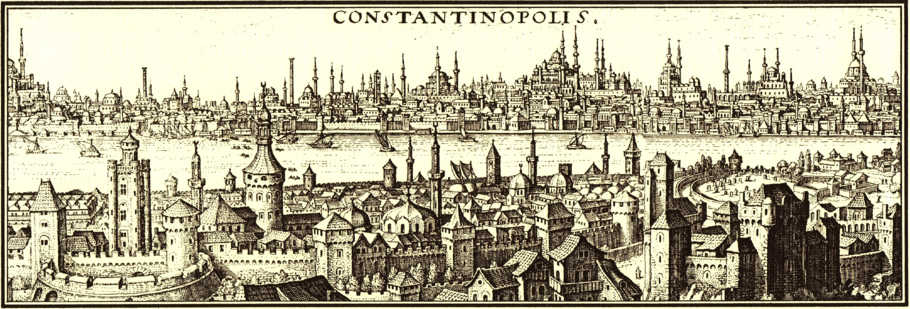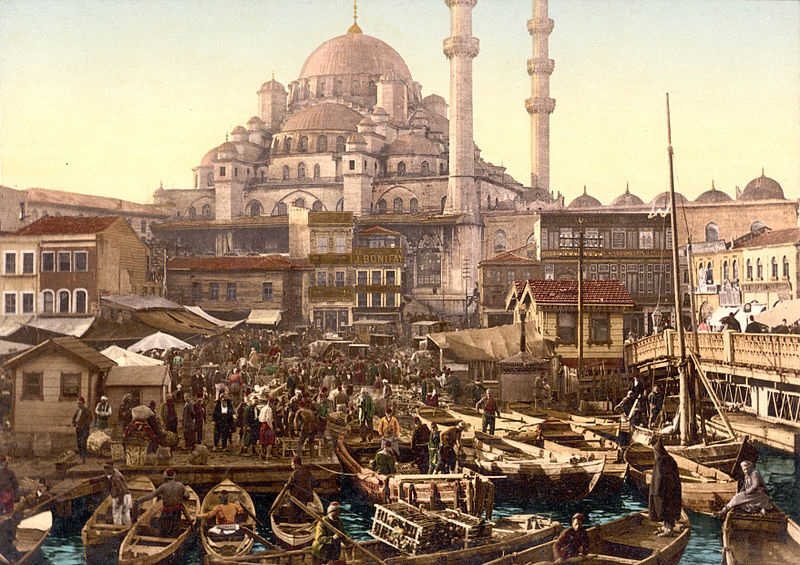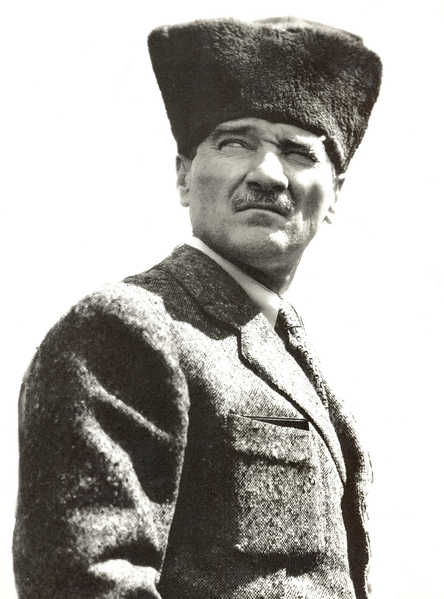History of Istanbul
The Fascinating History of Istanbul
Whenever you visit new place, no matter where in the world, it’s a good idea to know about its history. This doesn’t only add to your knowledge base, but it also helps you understand and appreciate what you’re seeing much more.
If you’re visiting Istanbul, you’re in for a treat. This is one of the most historic and cultural places you’ll ever have the good fortune to experience, and it is dripping in history. Dating back centuries and centuries, this is a city which has been the jewel in the crown of many an Empire, a city which started small but built itself up to huge levels, and as a result, has been conquered, fallen, retaken, and conquered once more by countless different armies and Empires.
Of course, you don’t have to learn about the history of Istanbul beforehand if you don’t want to. You can simply go and immerse yourself and learn on the spot, but knowing about the history beforehand will allow you to really know what you’re seeing, feel it, smell it, sense it, and be right there, in the heart of a city which has seen so much over the centuries. If walls could talk, there would be some seriously jaw-dropping tales to be told by the many buildings that line the mighty waters of the Bosphorus strait!
So, if you do want to learn more about the history of Istanbul before you head there, let’s go on a whistle-stop journey through history, and find out where Istanbul, once Constantinople, really came from.
First Things First …
Before we travel back in time, we should know a few things first. Istanbul is the largest city in Turkey, but it is not the capital city. The capital of Turkey is Ankara, and that it something which many people misunderstand! Yes, Istanbul used to be the capital, but it isn’t anymore.
Istanbul is also very large, in fact it is home to over 15 million people, and that doesn’t include tourists who visit for a holiday. This is the only city in the world which sits on two continents – Istanbul is partly in Europe and partly in Asia, and it is separated by the Bosphorus strait.
Now we have the basics covered, let’s head back in time.
Istanbul as Byzantium, Then Constantinople

The furthest back knowledge we have of Istanbul is a settlement as early as 3000 BC, however it was not specified as a city until around the 7th century BC. At this time the Greeks arrived and took up position, led by King Byzas. He called the city Byzantium and decreed the city as important, due to the Bosphorus Strait which ran through it, connecting the Black Sea and the Sea of Marmara.
History this far back is, as you can expect, rather sketchy, but certain important details do stand out. For instance, the city (still Byzantium) fell under Roman rule in the 300s, when the Roman Empire was seemingly taking over the world. The Emperor Constantine The Great changed the name to Constantinople in 330, when he declared the city the captain of the entire Roman Empire. He decorated the city with monuments which were of great importance, and mirrored those found in Rome itself.
Due to this new ‘capital’ status and the prosperity that the Empire owned, Constantinople as it was now named, began to grow in size and also in riches. Business began to boom as trade increased, and that was due in part to the strategic position along the Bosphorus once more.
Back to The Byzantines …
Due to in-fighting between members of the leading family, trouble came upon the Roman Empire and divisions occurred. Constantinople then fell back under Byzantine rule once more, in the 400s, however the name remained the same. As time went on, Greek influences were seen all over the city. Sculptures that were iconic of Rome were removed and because of Constantinople’s two continent position, trade grew even more, which meant the city itself grew in terms of size, spanning outwards as construction took place.
The famous Nika Riots took place during this time, in 532. This was a revolt amongst the people living n the city against the Government, and various monuments and statues were ruined, most notably Hagia Irene. When the city was put back together and buildings renovated to their former state, other buildings were built to add to the city’s impact further. One of these buildings as the Hagia Sophia, and from that time the city was identified as the hub of the Greek Orthodox Church, due to this stunning structure.
Other Empires on the outside were looking towards Constantinople’s power at this time and realising how much of a prize it would be. As such, several attempts to take control occurred, and failed over the years. One which did work however was when the Latin Empire arrived in 1204, and at this time Constantinople then became the hub and centre of the Catholic Latin Empire instead.
Power shifts went back and forth over the years to come, and the city was stuck in the middle of a power struggle between the two churches. Because of this, the state of the city went by the by, and as a result, finances plummeted. The city was declared bankrupt and people decided to move on to other parts of the country, away from what was starting to look like a failed story. The Byzantines reclaimed power in 1261, but so much of the former strength of the city had crumbled by this point.
Enter The Ottoman Empire
Just as Constantinople was struggling, another Empire was starting to rise up and take control of neighbouring areas – The Ottoman Turks.
Famously, on 29 May 1453, after 53 days of fighting, the Ottomans finally conquered Constantinople, with Sultan Mehmed II at the helm. Constantine XI, the last of the Byzantine Emperors, died during this battle, and Constantinople became the capital of the Ottoman Empire.

Istanbul was a city rejuvenated at this time. Business began to flourish, new infrastructures were put into place, several building we know and love these days were constructed, such as Blue Mosque, Grand Bazaar, the countless huge mosques we see, and Hagia Sophia was converted into a mosque too. Schools, hospital, public baths, these were all built to bring residents back to the city, and therefore continue to grow.
Throughout the Ottoman Empire, countless Sultans ruled the Empire, died or were killed, and then royalty was passed to another Sultan to take up the post. This continued in a circular pattern for centuries.
The most notable period of the during the Ottoman Empire’s rule was from 1520 to 1566, when Suleyman the Magnificent was in charge. This is the Sultan who made huge leaps and bounds with Istanbul life, and under his reign the city became a major business centre, as well as being a centre of culture and politics. Life at this time was considered peaceful, however the same can’t be said of the rule of other Sultans. Each Sultan had a specific way to rule.
The Ottoman Empire remained in power in the city until World War I, when allied troops defeated the Empire’s armies.
The Republic of Turkey

Many people do not realise how relatively recent in history the Ottomans ruled until. This is a huge part of Turkey’s history overall, not just the history of Istanbul, and it didn’t end until 1923, when a man named Mustafa Kemal Ataturk came to the fore.
This is the name and face you will see everywhere across not only Istanbul, but Turkey. This is the man who founded the new republic and changed millions of lives in the process. He is the man who brought equal rights for women, made Turkey a better place to live, and built his foundations on fairness.
When Ataturk declared the new Republic of Turkey in 1923, the name of Istanbul was formally changed to the name we know and love today, but the city was stripped of its capital status, and that was instead moved to Ankara. As Ankara is located in the centre of the country, and Turkey is such a huge city, it was thought to be a more sensible location. Istanbul was, and still is, Turkey’s largest city,
Historic buildings were renovated to keep them in good condition for future generations to visit. Hagia Sophia was turned into a museum, as was Topkapi Palace, and these places are now living, breathing monuments to the history that Istanbul has been witness to over the yers. Huge imperial mosques which date back to early Ottoman times still stand there, side by side with shopping malls and modern structures.
With a huge boom in the population during the 1970s, Istanbul grew even further, and nowadays you will walk around the city and hear accents from countless regions within Turkey, and languages from around the world. Istanbul has become a truly international destination, and it is one which still whispers at every corner about the history it has lived through.
